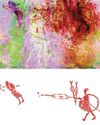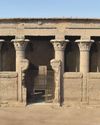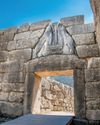
THE NAME PIYAMARADU has faded from history, but for some 40 years in the thirteenth century B.C., he was the nemesis of three successive rulers of the Hittite Empire, a Bronze Age kingdom that once spread across much of Anatolia, or present-day Turkey. At least a dozen cuneiform tablets unearthed in the royal archive of the Hittite capital of Hattusa speak darkly of this renegade. A powerful warlord, he was a disaffected Anatolian noble who had pledged fealty to the king before turning to banditry.
According to Hittite records, he pillaged the empire's westernmost possessions with impunity, carrying out devastating raids and then retreating to the shores of the Aegean, where he remained out of the Hittite rulers' reach. At some point, King Hattusili III (reigned ca. 1267-1237 B.C.) had had enough of Piyamaradu's predatory forays and lodged a firm diplomatic request with a fellow ruler to bring the meddlesome figure to heel. He addressed this missive to the king of Ahhiyawa, a great land to the west of Anatolia. In a surviving draft of the letter, he insists that his fellow ruler capture Piyamaradu or otherwise put an end to his attacks. Hattusili III further notes that earlier requests that the king of Ahhiyawa stop Piyamaradu had gone unheeded. What was not evident to Hattusili III-but is to modern scholars-is that the king of Ahhiyawa was likely powerless to stop Piyamaradu. "The Hittite kings fundamentally misunderstood what Ahhiyawa was," says Indiana University archaeologist Nicholas Blackwell.
Twenty-eight known Hittite tablets invoke the name Ahhiyawa, which scholars are now all but certain is related to "Achaean," a term Homer uses in the epic poem the Iliad to refer to all Greeks. Most now believe that the word was used by Hittites to describe the Mycenaean city-states of Late Bronze Age Greece, which flourished from around 1600 to 1200 B.C.
この記事は Archaeology の September/October 2023 版に掲載されています。
7 日間の Magzter GOLD 無料トライアルを開始して、何千もの厳選されたプレミアム ストーリー、8,500 以上の雑誌や新聞にアクセスしてください。
すでに購読者です ? サインイン
この記事は Archaeology の September/October 2023 版に掲載されています。
7 日間の Magzter GOLD 無料トライアルを開始して、何千もの厳選されたプレミアム ストーリー、8,500 以上の雑誌や新聞にアクセスしてください。
すでに購読者です? サインイン

A Very Close Encounter
New research has shown that human figures painted in red on a rock art panel in central Montana depict individuals engaged in a life-or-death encounter during an especially fraught historical moment.

A Sword for the Ages
A zigzag pattern, now tinged with the green-blue patina of oxidized metal, adorns the octagonal hilt of a rare sword dating to the Middle Bronze Age in Germany (1600-1200 B.C.) that was recently excavated in the Bavarian town of Nördlingen.

Ancient Egyptian Astrology
For centuries, layers of soot have coated the ceilings and columns in the entrance hall of Egypt's Temple of Esna. Now, an Egyptian-German team of researchers, led by Hisham El-Leithy of the Egyptian Ministry of Tourism and Antiquities and Christian Leitz of the University of Tübingen, is restoring the temple's vibrant painted reliefs to their original brilliance.

BRONZE AGE POWER PLAYERS
How Hittite kings forged diplomatic ties with a shadowy Greek city-state

When Lions Were King
Across the ancient world, people adopted the big cats as sacred symbols of power and protection

UKRAINE'S LOST CAPITAL
In 1708, Peter the Great destroyed Baturyn, a bastion of Cossack independence and culture

A MORE COMFORTABLE RIDE
Although the date is much debated, most scholars believe people 5,000 years ago. For thousands of years after that, they did so without saddles. \"In comparison with horse riding, the development of saddles began relatively late, when riders began to care more about comfort and safety in addition to the horse's health,\" says University of Zurich archaeologist Patrick Wertmann.

DRAMATIC ENTRANCE
Four miniature terracotta masks found in the Roman city of Jerash in Jordan shed light on its theater district in the second century A.D. Excavators from the University of Jordan unearthed the masks in a doorway of a structure.

THE ELEPHANT AND THE BUDDHA
While working in the village of Gada Balabhadrapur on the banks of the Daya River in India's state of Odisha, archaeologists unearthed a three-foot-tall sculpture of an elephant dating to the third century B.C., a time when Buddhism flourished in the area.

An Elegant Enigma
The luxurious possessions of a seventeenth-century woman continue to intrigue researchers a decade after they were retrieved from a shipwreck